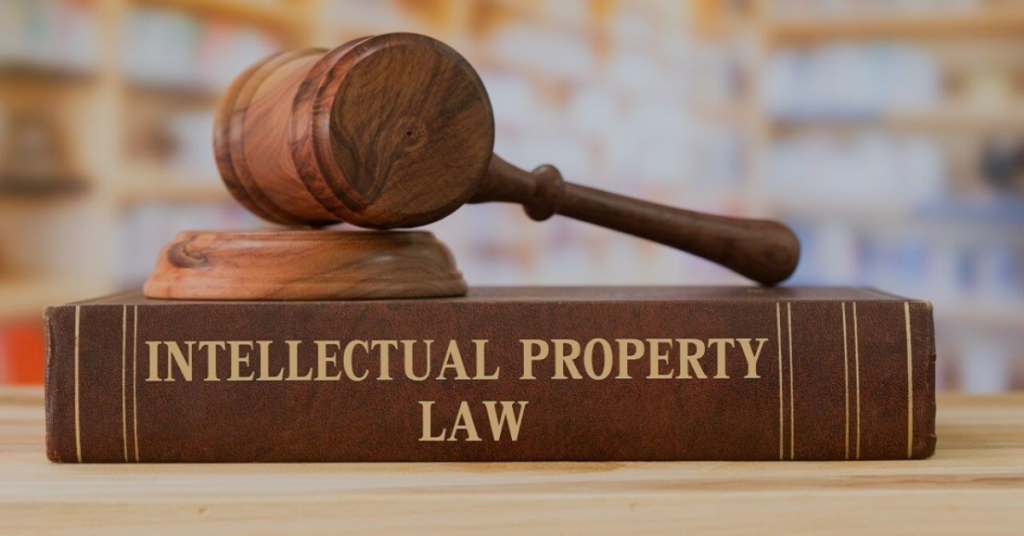Equitable Distribution of Auction Proceeds: Legal Principles and Practical Applications in Chandigarh
Chandigarh Property Law Updates
The auctioning of property, often arising from debt recovery, mortgage foreclosures, or partition suits, is a common occurrence in Chandigarh. While the auction process itself is governed by specific rules, the subsequent distribution of the sale proceeds requires careful adherence to legal principles of equity and fairness. This article delves into the legal framework governing the equitable distribution of auction proceeds in Chandigarh, focusing on the relevant provisions of Indian law, judicial pronouncements, and practical considerations that arise in such scenarios.
I. Legal Framework Governing Distribution of Auction Proceeds
The distribution of auction proceeds isn't governed by a single, standalone statute. Instead, it draws from a constellation of laws and equitable principles. Key legislation impacting the distribution process includes:
- The Code of Civil Procedure, 1908 (CPC): This Act lays down the procedural framework for civil suits, execution of decrees, and the sale of property through auction. Sections 60-73 of the CPC, along with Order XXI, provide detailed provisions regarding the attachment and sale of property in execution of decrees.
- The Transfer of Property Act, 1882 (TPA): This Act governs the transfer of property and is crucial in cases involving mortgages, liens, and other encumbrances on the auctioned property. Sections 69 and 69A of the TPA, though primarily dealing with the power of sale without the intervention of the court, highlight the priority given to mortgagees in certain circumstances.
- The Securitisation and Reconstruction of Financial Assets and Enforcement of Security Interest Act, 2002 (SARFAESI Act): This Act empowers banks and financial institutions to recover their dues by auctioning secured assets without court intervention. However, it mandates adherence to principles of equity and fairness in the distribution of proceeds.
- Specific Relief Act, 1963: This act provides for specific performance of contracts and equitable reliefs, which might be relevant in determining entitlement to auction proceeds in certain cases.
- Principles of Equity: Even where specific statutory provisions are absent or unclear, courts rely on principles of equity, justice, and good conscience to ensure a fair distribution of auction proceeds.
II. Prioritizing Claims: Who Gets Paid First?
Determining the order in which claimants receive their share of the auction proceeds is paramount. Generally, the following order of priority is observed:
-
Costs of the Auction: The expenses incurred in conducting the auction, including advertising costs, the auctioneer's commission, and any other related expenses, are typically deducted first from the sale proceeds.
-
Government Dues: Statutory dues owed to the government, such as property taxes, unpaid stamp duty, or other government levies that constitute a charge on the property, are usually prioritized.
-
Secured Creditors (Mortgagees): Secured creditors, particularly mortgagees who have a valid and registered mortgage on the property, generally have the first claim on the auction proceeds, up to the amount of their outstanding debt (principal and interest). The priority among multiple mortgagees is determined by the date of registration of their respective mortgages, with earlier registered mortgages having priority. This principle is captured in the Latin maxim "Qui prior est tempore, potior est jure" (he who is earlier in time is stronger in law).
-
Other Secured Creditors: Other secured creditors, such as those holding a charge or lien on the property, are paid after the mortgagees. The priority among different types of secured creditors may depend on the nature of the security interest and the date of its creation.
-
Unsecured Creditors: Unsecured creditors, who do not have any security interest in the property, are paid only after all secured creditors have been satisfied. Their claims are typically satisfied pari passu (on an equal footing), meaning that each unsecured creditor receives a proportionate share of the remaining proceeds.
-
Judgment Debtor/Owner: After all the above claims have been satisfied, any remaining surplus is returned to the judgment debtor (the original owner of the property) or their legal heirs.
Illustrative Examples:
-
Scenario 1: Mortgage Foreclosure: A bank auctions a property after the borrower defaults on a home loan. The auction fetches ₹1 crore. The outstanding loan amount is ₹70 lakhs. Property taxes of ₹5 lakhs are outstanding. The auction expenses are ₹2 lakhs. The bank receives ₹70 lakhs, the government receives ₹5 lakhs, auction expenses of ₹2 lakhs are paid, and the remaining ₹23 lakhs is returned to the borrower.
-
Scenario 2: Multiple Mortgages: A property is mortgaged to Bank A (first mortgage registered in 2015) and Bank B (second mortgage registered in 2018). The auction fetches ₹1.5 crore. Bank A's outstanding debt is ₹90 lakhs, and Bank B's outstanding debt is ₹70 lakhs. Auction expenses are ₹3 lakhs. Bank A receives ₹90 lakhs, Bank B receives ₹57 lakhs (balance from ₹1.5cr – 90 lakhs – 3 lakhs), and the auction expenses of ₹3 lakhs are paid. Bank B does not receive the complete 70 Lakhs.
III. Challenges and Disputes in Distribution
The distribution of auction proceeds is often fraught with complexities and potential disputes. Some common challenges include:
-
Competing Claims: Multiple creditors may assert claims on the auction proceeds, leading to disputes over priority.
-
Valuation Disputes: Disagreements may arise regarding the valuation of the property, which can impact the amount of proceeds available for distribution.
-
Fraudulent Transfers: Creditors may allege that the judgment debtor fraudulently transferred assets to avoid paying their debts.
-
Encumbrances: Undisclosed encumbrances on the property, such as unregistered mortgages or pending litigation, can complicate the distribution process.
-
Claims of Co-owners or Family Members: Disputes may arise if co-owners or family members of the judgment debtor claim a share in the property or its proceeds.
-
Clarity of charge documents: The nature and extent of the charge created by the charge document may be a matter of dispute.
Resolution of Disputes:
These disputes are typically resolved through:
- Intervention Applications: Interested parties can file intervention applications in the execution proceedings to assert their claims and seek a determination of their rights.
- Separate Suits: In some cases, it may be necessary to file a separate civil suit to resolve complex issues of ownership, priority, or fraud.
- Mediation and Conciliation: Alternative dispute resolution mechanisms, such as mediation and conciliation, can be utilized to reach an amicable settlement among the competing claimants.
IV. Practical Considerations in Chandigarh
In Chandigarh, several practical considerations are relevant to the distribution of auction proceeds:
- Chandigarh Administration Guidelines: The Chandigarh Administration may issue specific guidelines or regulations regarding the auction of properties and the distribution of sale proceeds, particularly in cases involving government land or properties under its control.
- Court Practices: Familiarity with the specific practices and procedures of the Chandigarh District Courts and the Punjab & Haryana High Court is essential for navigating the distribution process effectively.
- Local Property Laws: Understanding local property laws and regulations, such as the Chandigarh Apartment Ownership Act, 2001, is crucial in determining the rights and obligations of various parties involved.
- RERA Regulations: If the auctioned property falls under the purview of the Real Estate (Regulation and Development) Act, 2016 (RERA), the distribution process must comply with the provisions of RERA, particularly regarding the rights of homebuyers and the obligations of developers.
- Dealing with Cooperative Societies: Many properties in Chandigarh are under the purview of Cooperative Housing Societies. Dealing with claims in such cases requires knowledge of the Cooperative Societies Act and the respective bye-laws of the society.
V. Key Legal Principles Applied by Courts
Indian courts consistently apply certain key legal principles while deciding on the equitable distribution of auction proceeds:
- Principle of Subrogation: This principle allows a person who pays off a debt owed by another to step into the shoes of the original creditor and acquire the same rights and remedies that the original creditor had. This is often relevant in mortgage cases.
- Principle of Contribution: This principle applies when multiple parties are jointly liable for a debt, and one party pays more than their proportionate share. In such cases, the party who overpaid is entitled to contribution from the other liable parties.
- Doctrine of Lis Pendens: This doctrine states that during the pendency of a suit relating to immovable property, the property cannot be transferred or otherwise dealt with by any party to the suit so as to affect the rights of the other party.
- "First in Time, First in Right": As mentioned earlier, this principle gives priority to the claimant whose right or interest was created earlier in time. This is particularly relevant in determining the priority of mortgagees.
- Fraud Vitiates Everything: Any fraudulent or collusive transaction intended to defeat the rights of creditors will be set aside by the courts.
- Equity Follows the Law: While courts apply equitable principles, they generally avoid contradicting or overriding express statutory provisions.
VI. Recent Case Laws and Developments
Staying abreast of recent case laws from the Supreme Court and the Punjab & Haryana High Court is crucial for understanding the evolving legal landscape regarding the distribution of auction proceeds. Some recent developments might focus on:
- Interpretation of the SARFAESI Act: Courts are constantly clarifying the scope and applicability of the SARFAESI Act, particularly in relation to the rights of borrowers and the obligations of banks and financial institutions.
- Protection of Homebuyers' Interests: Recent judgments have emphasized the need to protect the interests of homebuyers, even in cases where the property is being auctioned due to the developer's default.
- Resolution of Conflicting Claims: Courts continue to grapple with the complexities of resolving conflicting claims among multiple creditors, particularly in insolvency and bankruptcy proceedings.
- Impact of GST: Clarification on the applicability and impact of the Goods and Services Tax (GST) on auction sales is also an evolving area.
VII. Conclusion
The equitable distribution of auction proceeds in Chandigarh requires a nuanced understanding of the relevant legal framework, including the CPC, TPA, SARFAESI Act, and principles of equity. Prioritizing claims, resolving disputes, and navigating the practical considerations specific to Chandigarh are essential for ensuring a fair and just outcome for all parties involved. Staying updated on recent case laws and developments is also crucial for legal professionals advising clients in these complex matters. By adhering to legal principles and prioritizing fairness, the distribution process can ensure that creditors receive their due while safeguarding the rights of the judgment debtor and other stakeholders.




